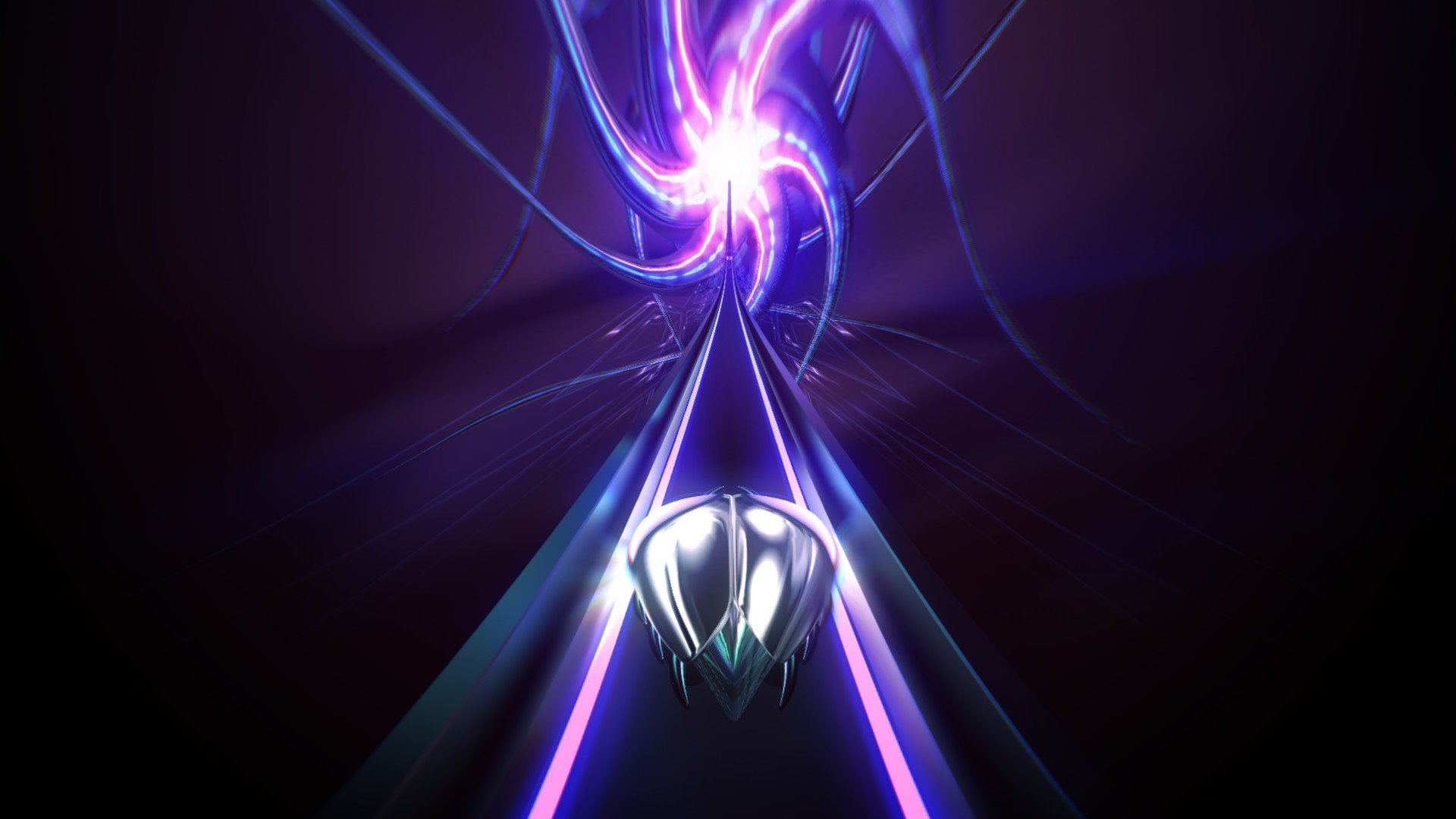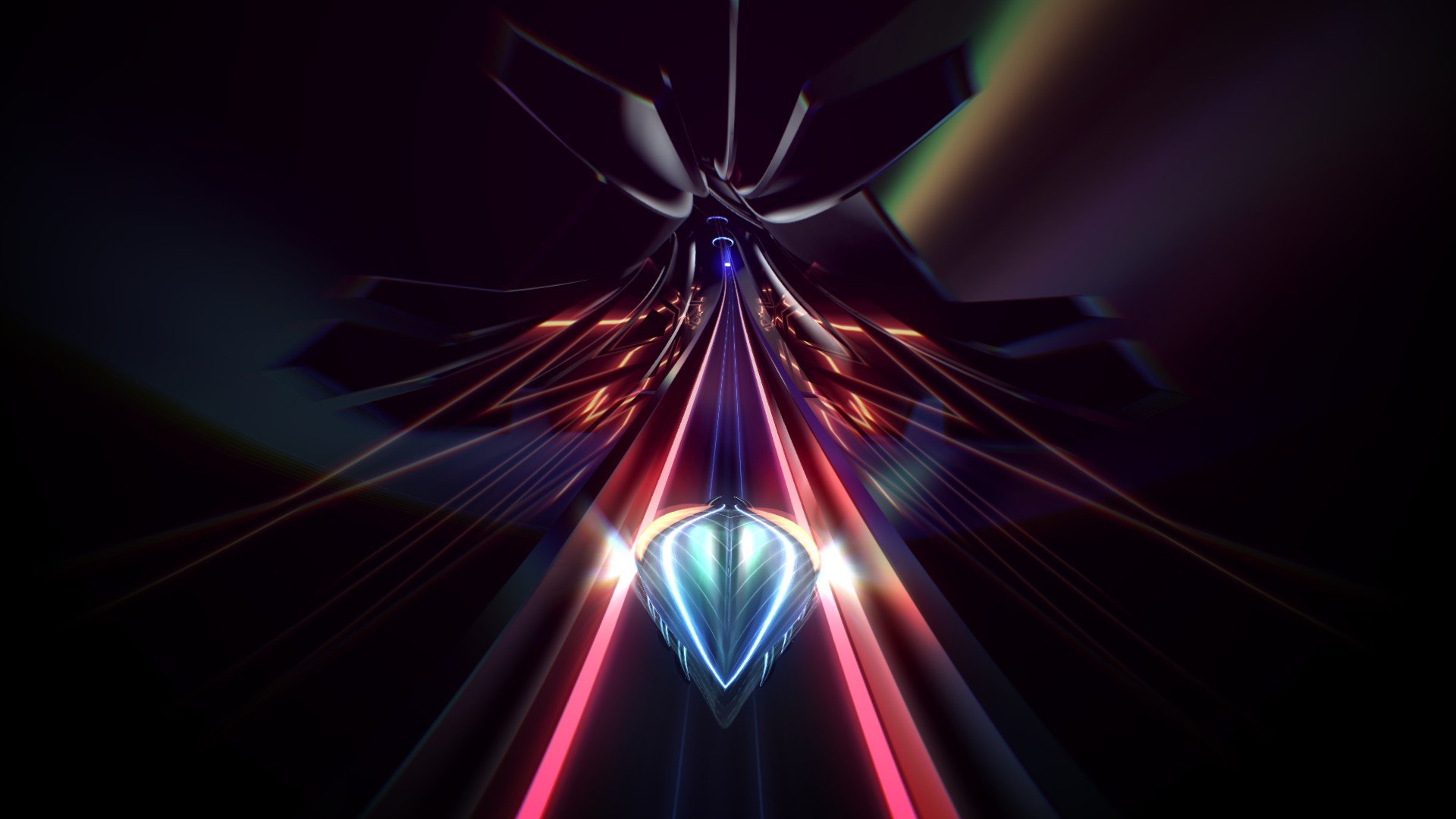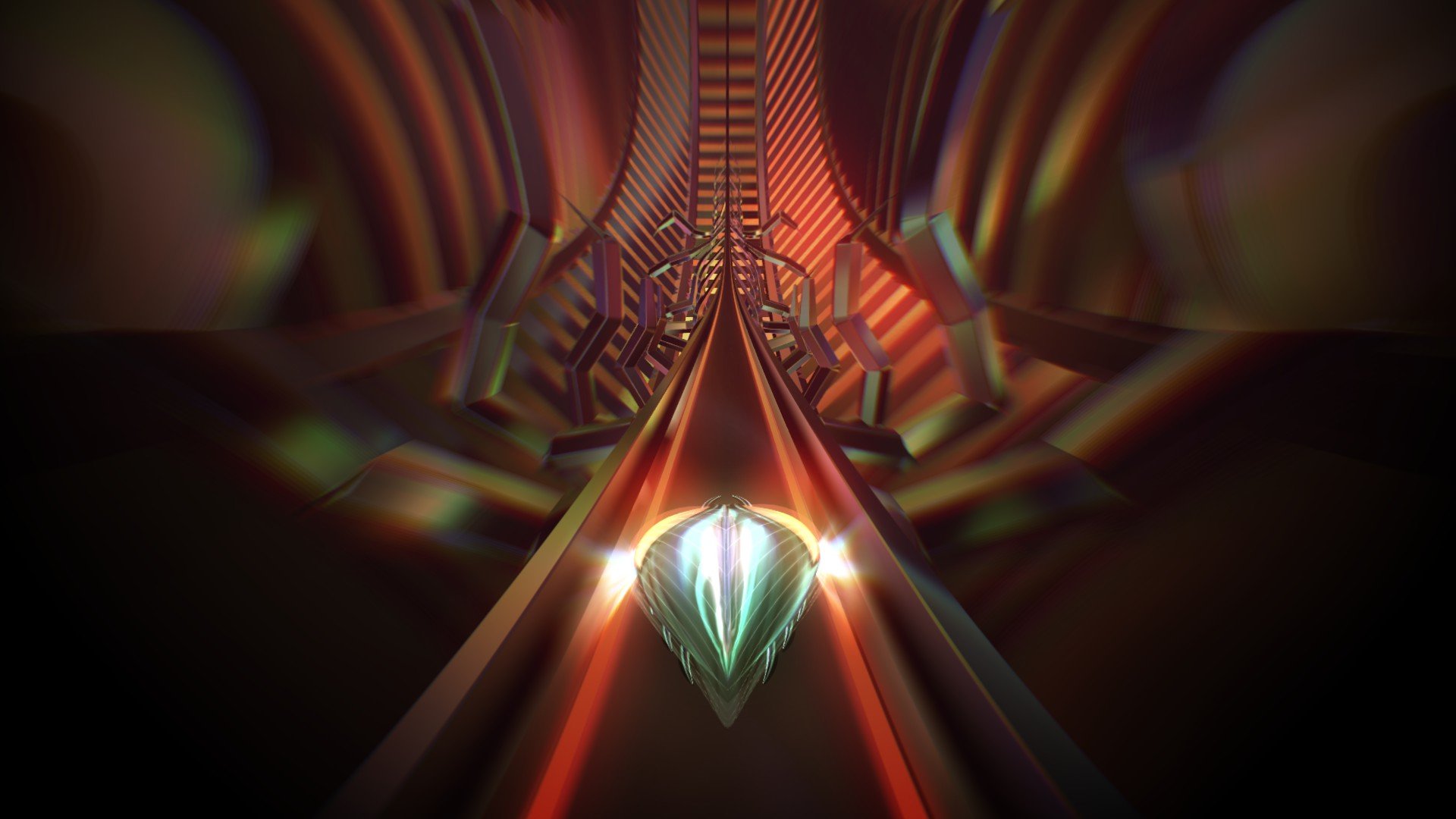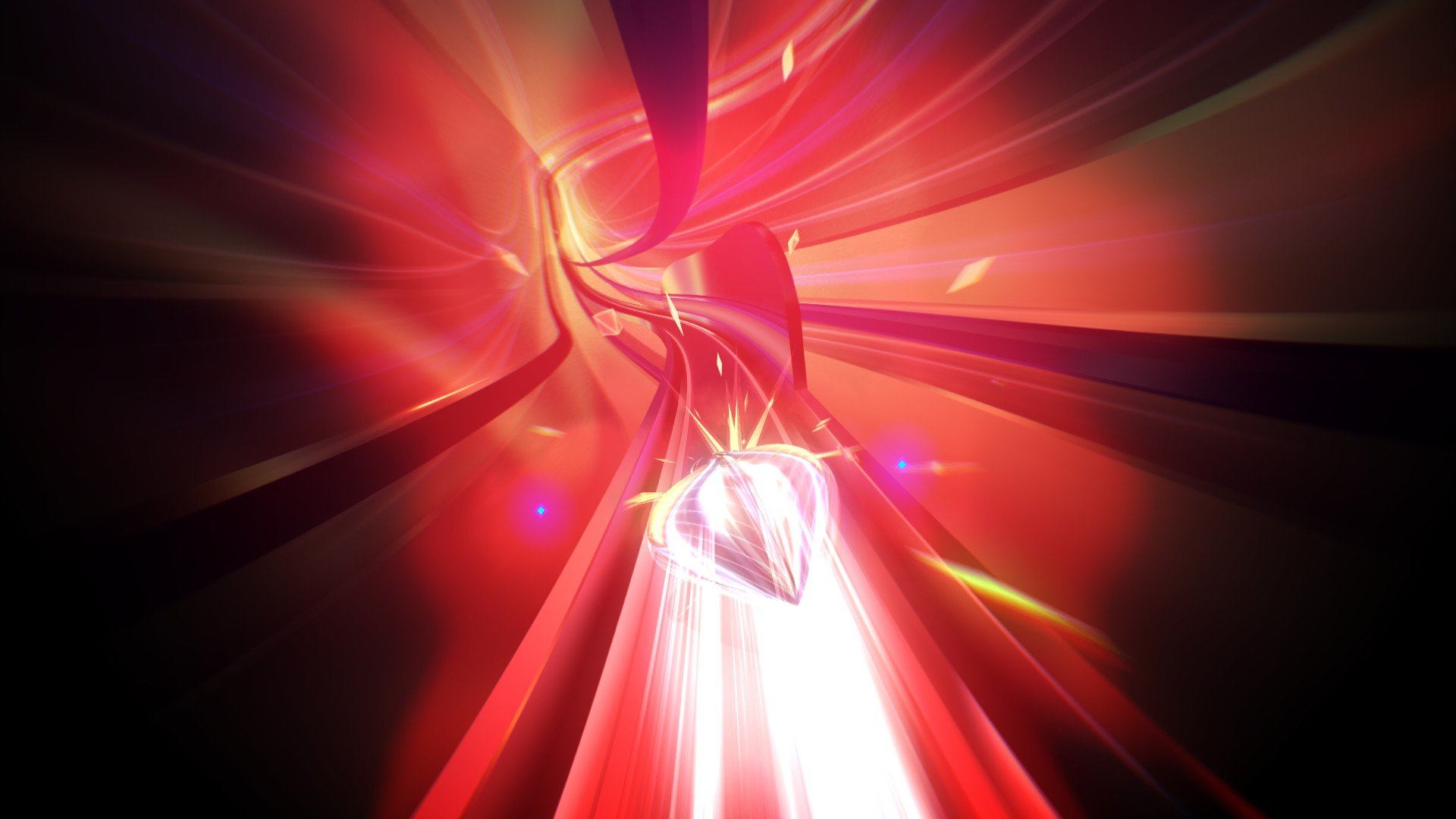Our Verdict
A total assault on your ears, eyes and reflexes. Thumper will beat you up, but you’ll enjoy it.
PC Gamer's got your back
What is it? A brutal, challenging, visually arresting rhythm game.
Expect to pay: £15.99/$19.99
Developer: Drool
Publisher: Drool
Reviewed on: GeForce GTX 780ti, 16GB RAM, Intel 4770k
Multiplayer: None
Link: Official site
You are a chrome beetle, hurtling unstoppably into a void, zooming through hellscapes on rails at grimace-inducing speed. A screaming, flaming skull hovers in the middle distance, sending debris down the track to end you. If that description reads like a nightmare, know that Thumper looks and sounds like one, too. Most games have you fighting your way out of danger, but Thumper fires you headlong into the abyss. It gave me heartburn, but in a good way.
Thumper is a rhythm game with deceptively simple one-button controls, but one in which the slightest lapse will finish you immediately. Fail to turn, jump, change rails or smash through barriers in time with the grim industrial soundtrack and death is immediate. There are ways to wring a higher score out of each section with perfect timing, but first time through, your only concern will be survival. Thumper’s nine long, relentless levels are split into short checkpointed sections. Lose concentration for a half-second and careen into one of the obstacles on the track, and your beetle’s chrome wings will be stripped violently from its body, leaving you with one last chance before death. Thumper stops short of true sadism by giving you two shots at success but good lord, the feeling when you’re on that last try and you’re about to come up on a new section of track is not pleasant. Suddenly you’re battling your nerves alongside everything else that Thumper throws into your path.
What’s so interesting about Thumper is the atmosphere of doom and malevolence it conjures. Most iconic rhythm games (Rez, Amplitude) try to lull you into a sense of flow. Their visuals are all expanding and contracting shapes, blooming colours, pretty lights—echoes of the kind of blissy visuals that your brain comes up with on its own when you close your eyes and relax. The colours—blues, whites, greens—are comforting and chill. Thumper beats you into a sense of flow. The visuals are hellish, sharp, with tendrils and right-angles and weird undulating shapes that recall insectoid limbs. Bosses loom menacingly on the horizon as your chrome beetle speeds down its endless rail, taking the form of fiery skulls or abstract, geometric entities with mouths. The palette is dominated by red and black. It reminds me of Devil Daggers, both in the simplicity of its play and the arresting visual style.
The music, too, is brutal and relentless, bordering on monotonous, with little variation in the tempo. It frequently sounds like it’s being banged out on the lid of a trash-can in an echoey alley. This is a perfect match for the visual style, and the beat transforms your feeble button-presses into reverberating shockwaves. It is absolute sensory overload—there is no room for anything in your brain but what Thumper is forcing upon your eyes, ears and reflexes.
All of this is clearly no accident. Thumper’s developers Marc Flury and Brian Gibson have frequently referred to it as “rhythm violence”, which aptly communicates the physicality of playing it: it really feels like being pummelled (especially in VR—Thumper will be patched for VR compatibility on PC in the coming month). The end result, though, is the same as what games like Rez achieve with their gentler, synaesthesic approach: it induces a state of total one-ness with your senses and the game. Playing it well feels like a mind-meld. Just watching it is hypnotising.
There are a couple of things about Thumper that annoy the rhythm-action purist in me. It’s extremely fast, but usually you can see far enough down the rail to be able to react quickly enough to survive. Sometimes, though, it will enclose you in a corridor with sharp turns that prevent you from seeing what’s coming up, meaning you have to memorise the pattern of obstacles through trial and error. Speaking of errors, the cacophony of alarming visual and audio feedback when you slam into a wall totally breaks my concentration, and even obscures the screen sometimes. If I lost one life, I’d often lose the other within five seconds. It is a cardinal sin of rhythm-games to ever change the tempo; Thumper only slows down for a split-second when you smash into something, but it was enough to throw me.
Thumper is profoundly unsettling to play, but also quite unlike anything else I’ve ever encountered in this genre—and I have played rhythm games ranging from abstract aural experiments to Rock Band to hyperactive-J-pop-powered arcade machines in the shape of glowing cubes. Thumper requires the same beat-matching skill and quick reactions, but it feels more like a survival-horror game when you’re actually playing it, albeit at 100x the speed. It gave me both a creeping sense of dread and an extreme adrenaline high. I still think about it all the time, and I played it obsessively for a couple of days until I conquered it. Once you’ve stared into the abyss, something about it keeps drawing you back.
Keep up to date with the most important stories and the best deals, as picked by the PC Gamer team.




A total assault on your ears, eyes and reflexes. Thumper will beat you up, but you’ll enjoy it.



